#Karolyn grimes
Explore tagged Tumblr posts
Text

Child actress Karolyn Grimes, here 1946, is best known for playing Zuzu, James Stewart and Donna Reed's daughter in the classic 𝑰𝒕'𝒔 𝒂 𝑾𝒐𝒏𝒅𝒆𝒓𝒇𝒖𝒍 𝑳𝒊𝒇𝒆 (1946). She also played David Niven and Loretta Young's daughter in another Christmastime classic, 𝑻𝒉𝒆 𝑩𝒊𝒔𝒉𝒐𝒑'𝒔 𝑾𝒊𝒇𝒆 (1947).
23 notes
·
View notes
Text

I always thought Zuzu was so cute. And to think, the actress didn’t watch the film until age 40.
I’m glad she was able to create a more wonderful life for herself later on ❤️
#it’s a wonderful life#zuzu#Zulu’s petals#jimmy stewart#donna reed#Karolyn grimes#1946#frank capra#christmas#christmas movies
2 notes
·
View notes
Text

Now showing on DuranDuranTulsa's Classic Theater...It's A Wonderful Life (1946) on glorious vintage VHS 📼! #movie #movies #drama #Christmas #itsawonderfullife #JamesStewart #donnareed #karolyngrimes #VirginiaPatton #lionelbarrymore #thomasmitchell #henrytravers #carolcoombs #GloriaGrahame #larrysims #toddkarns #bobbyanderson #BeulahBondi #40s #vintage #VHS #durandurantulsa #durandurantulsasclassictheater
#movie#movies#drama#christmas#it's a wonderful life#james stewart#donna reed#karolyn grimes#Virginia Patton#jimmy hawkins#Lionel Barrymore#thomas mitchell#carol coombs#henry travers#larry sims#gloria grahame#todd karns#frank albertson#bobby anderson#40s#vintage#vhs#duran duran tulsa's classic theater#duran duran tulsa
3 notes
·
View notes
Text

CANCELLED MOVIES MEME [74/∞]- IT'S A WONDERFUL LIFE: THE REST OF THE STORY
year: 2015
plot: in the sequel to the Christmas classic that also takes cues from A Christmas Carol, the angel of George Bailey's daughter Zuzu (Karolyn Grimes reprising her role) shows his miserly grandson what the world would be like without him.
reason for cancellation: shut down in pre-production by Paramount as contrary to popular belief the full original movie and the story it's based on are not in the public domain
0 notes
Text
The Bishop's Wife (1947)

The Bishop's Wife is a Christmas film for those more interested in heavenly miracles than fat men in red suits. It’s a bit of a strange bird, which is why the archival posters I saw for it are utterly puzzling (I wonder if audiences at the time felt misled) but false advertising from the marketers or not, I won't complain. Whatever it takes to get eyes on this movie is worth it.
Bishop Henry Brougham (David Niven) is having difficulty funding the building of a new cathedral. Without the contribution of Agnes Hamilton (Gladys Cooper), it will be impossible for him to meet his goal but her money comes with all sorts of demands about the building’s design. His prayers for help are answered when a suave angel named Dudley (Cary Grant) appears at his door. When Dudley seems more preoccupied with helping Henry’s wife, Julia (Loretta Young) reconnect with her old friends and playing with Henry's daughter, Debby (Karolyn Grimes), than raising money, Henry has difficulty understanding what sort of angelic help he’s received.
The posters advertising the film heavily emphasize Cary Grant and Loretta Young, implying that his character might be stealing her away from David Niven's. It’s true that if you saw certain scenes in isolation and didn’t know that Dudley was an angel, it might seem like the two of them would end up together, but this is not that kind of movie. The angel knows that Henry's put so much effort in this cathedral project that he's neglected his family. His wife and daughter feel sad and lonely at the worst time of year: Christmas. Henry may not be directly going up to people and asking them for money for the building but you can tell there’s a plan in motion. You're curious to see how it will all come together.
Cary Grant is perfectly suited for this role. He’s extremely charming and divinely charismatic. He and Loretta Young get along so well you understand why Bishop Henry becomes suspicious of them. Young’s performance is also noteworthy because you see how much fun she’s having on the little adventures Dudley takes her, while never for a second thinking she might be falling out of love with her husband. It’s simply a deep friendship, the kind that might not last long but means the world to you at that moment. The sentiment is infectious, both to the other people in the film (there are several memorable side characters, such as an old friend of Julia’s, played by Monty Woolley) and to viewers. By the time the film gets to its December 25th finale, you’ve been reminded of some of the more important elements of the holiday and have been told a story that’s unlike any other yuletide romance I can think of.
I hadn’t heard anyone speak of The Bishop’s Wife before seeing it on a list of “classic” Christmas films and I can sort of see why. If I tell you it's the story of a bishop wondering about his wife's happiness, you’ll wonder how you could possibly relate. Trust me. Give this film a chance. In no time, you'll get a feel for the characters and become involved in the story. Seeing Dudley put together his ultimate plan is intriguing, the drama between the family is engaging, the performances are quite good (I didn’t mention David Niven earlier but he does well for himself) and the black-and-white cinematography gives it a certain homey feel you can't resist. I even think there's a spot for The Bishop's Wife in your yearly viewing list, particularly if you're craving more earnest Christmas sentiments than we usually get. (December 23, 2021)

#The Bishop's Wife#movies#films#movie reviews#film reviews#Henry Koster#Leonardo Bercovici#Robert E. Sherwood#Billy Wilder#Charles Brackett#Cary Grant#Loretta YOung#David Niven#1947 movies#1947 films#christmas movies#christmas films
7 notes
·
View notes
Text

#TBT to when I met (Karolyn Grimes) Zuzu from It’s a Wonderful Life in Seneca Falls 🎄
3 notes
·
View notes
Text
Happy Christmas in July!
Transcript below the break.
Hello and welcome back to the Rewatch Rewind! My name is Jane, and this is the podcast where I count down my top 40 most frequently rewatched movies in a 20-year period. Today I will be celebrating Christmas in July by discussing number 18 on my list: Liberty Films and RKO’s 1946 holiday classic It’s a Wonderful Life, directed by Frank Capra, written by Frances Goodrich, Albert Hackett, Frank Capra, and Jo Swerling, based on a story by Philip Van Doren Stern, and starring James Stewart and Donna Reed.
George Bailey (James Stewart) has always had big dreams of traveling and building things, but instead he’s stuck in his small hometown of Bedford Falls, New York, managing the family building and loan business. When his absent-minded Uncle Billy (Thomas Mitchell) misplaces $8,000 of company money, George feels that he is worth more dead than alive and plans to end his life on Christmas Eve, when he is stopped by Clarence Oddbody, Angel 2nd Class (Henry Travers) who has been sent from heaven to save him. George tells Clarence he wishes he’d never been born, so Clarence shows George what the town would be like without him.
As I’ve mentioned before, my family didn’t have a VCR in the ’90s, but we did sometimes watch movies together when they came on TV, so we caught It’s a Wonderful Life pretty much every year. I don’t know exactly how old I was when I first watched it, but I do remember being confused that it was in black and white. Once we finally got a VCR, we taped it one year so we could watch it whenever we wanted, and then eventually we got it on DVD. At some point we decided that it made a good Thanksgiving movie in addition to a Christmas one, since it’s about being grateful for what you have, so I tended to watch it once or twice a year for a while. I’d probably seen it about 10 times before I started keeping track, and then I saw it once in 2003, once in 2004, twice in 2005, once in 2006, three times in 2008, twice in each year from 2009 through 2012, and then once each in 2013 and 2014, and then once in each year from 2020 through 2022. I don’t remember exactly why I took such a long break after 2014, and I think it was probably a combination of factors, but I do remember reading an article probably around then arguing that Bedford Falls actually would have been more fun without George and that he should have gone to jail anyway that kind of ruined the movie for me a bit. While I recognize that there are legitimate criticisms to be made of the story and message and other details (such as the nonsensical decision to make AS2 the abbreviation for Angel Second Class), for me, the good definitely outweighs the questionable.
For one thing, the acting is superb. Everybody’s at the top of their game, with character actors such as Ward Bond, Frank Faylen, and Beulah Bondi doing some of their best work, and some very impressive child acting, particularly from Bobbie Anderson and Karolyn Grimes. Thomas Mitchell knows exactly when to play Uncle Billy’s memory issues for comic relief and when to reveal how devastating they can be. Henry Travers similarly gives the audience a perfect balance of chuckles and tears. Frequent femme fatale Gloria Grahame makes the initially shallow Violet Bick surprisingly sympathetic. The character of Mary Hatch Bailey is also deceptively simple on the surface, but Donna Reed brings her to life with so much warmth and depth and complexity that it takes several rewatches to fully appreciate her. Lionel Barrymore perfectly embodies the evils of capitalist corruption as Potter, in one of the most diabolical villain performances of all time. And then there’s James Stewart. My man Jimmy. I’m kind of surprised I haven’t had an opportunity to talk about him on this podcast before now, since he’s definitely one of my faves. His performance as George Bailey is SO. GOOD! Just thinking about it gives me chills. We see George go from a young man full of hopes and dreams to a frustrated, drained, broken middle aged man at the end of his rope, to a man trying to make sense of the reality of his non-existence who ultimately learns that he’s a better and more important person than he thought he was. It’s a major emotional roller coaster, and Jimmy Stewart absolutely nails every moment of the ride. It’s rare for a Hollywood film to let a male protagonist get anywhere near as emotionally raw and vulnerable as George Bailey is at several points throughout this film, but Stewart was clearly not afraid to cry on screen, and it’s beautiful to watch.
The sets and visual effects are also beautiful and noteworthy. Falling snow on film used to be created with cornflakes painted white, but a new snow effect using fire extinguisher foam mixed with soap and water was developed for It’s a Wonderful Life. Using this allowed the sound to be recorded live, which had been impossible with crunchy cornflakes, and I feel like it enhanced the performances to not have to record the dialogue separately. The Bedford Falls set was one of the longest sets that had ever been made for an American movie, and the streets and buildings do an excellent job of bringing the audience into the town. Apparently three different cinematographers worked on this movie (they kept getting fired due to disagreements with the director), but the look and feel of the film is remarkably consistent and unique. Plenty of movies set in small towns were made during this era, but somehow none of them feel quite like this one. That could just be my own nostalgia, since this was the first one I saw, but there’s just something about Bedford Falls that sets it apart from other movie settings, and that’s a big part of what I love about this movie. The sets and the lighting and the performances are so engrossing that no matter how many times I rewatch it, I still feel like I’m part of the town, and like I’m interacting with the characters, in a fresh and unique way.
It's interesting that I’m talking about two 1946 movies in a row because I think that, like Notorious, It’s a Wonderful Life could really only have been made that year. James Stewart had left Hollywood to fight in World War II and was considering giving up acting for good when Frank Capra asked him to star in this film. Capra had spent the war making documentaries and propaganda films, and this was also his first post-war movie. Now, I’ve never fought in a war, and my parents are baby boomers so I definitely wasn’t around for World War II, but it stands to reason that their wartime experiences significantly impacted the people involved in making this film and were still fresh on their minds. Stewart apparently said that his PTSD and depression from the war helped him relate to George Bailey, and that acting out George’s anger and frustrations was cathartic for him. The US was also at its most anti-fascist at this time, as James and I briefly discussed last week, which I assume is what allowed this movie to be so blatantly anti-capitalist. Building and Loan associations don’t really exist anymore, but based on my understanding of the Bailey business from this movie, they seem kind of like mutual aid mortgages. Because George holds onto this institution, the people of Bedford Falls are able to afford to buy decent homes for themselves. The alternative that Potter wants is everyone paying him exorbitant rent. By capitalist standards, George is a failure, and was incredibly foolish for turning down Potter’s lucrative job offer in the middle of the movie. But the film portrays him as a hero precisely because he values people over money. When he’s at the end of his rope, Potter has the power to save him (especially because he’s the one who has the cash that Uncle Billy lost) but he refuses; it’s George’s friends and family who rally around to help him. And that sounds like something that would have been considered dangerously close to socialism in the McCarthy era. The Hollywood blacklist started in 1947, so I feel like It’s a Wonderful Life couldn’t have been made even a year later than it was without significant modifications.
One of the main focuses of the story is the romance between George and Mary, but I feel like even that is used as a demonstration of the shortcomings of our capitalist society. They are clearly drawn to each other, but George initially tries to pretend otherwise, in large part because he doesn’t feel good enough for her. She has a college education; he does not. Their wealthy friend, Sam Wainwright, is interested in Mary, and George feels like she would be better off with Sam, even though all she wants is George. They spend all their honeymoon money on supporting Building and Loan clients during a bank run, at Mary’s suggestion, but George later regrets that he couldn’t afford to provide for both his clients and his wife. Mary is perfectly happy with their life, but George feels like a failure by society’s standards and can’t see anything else, so he needs Clarence’s reality check to show him that he has always been enough for her. If George wasn’t constantly being bombarded with the message that he should be making more money, that he should have been able to leave Bedford Falls and make something more of himself, that he should be able to buy his wife and children extravagant things, maybe he could have been happy without divine intervention.
But also we need to talk about what happens to Mary in the alternate reality when George doesn’t exist because I have some very mixed thoughts about that. Earlier, right after George turned down Potter’s offer, he asked Mary why she married a guy like him and she replied, “To keep from being an old maid.” So when George doesn’t exist, she is an old maid. I remember as a teenager who didn’t know that being aroace was a thing and didn’t want to examine why I only ever had “crushes” on celebrities who were already dead, thinking that Mary’s attitude made perfect sense: if you can’t marry Jimmy Stewart, why get married at all? The part that has always confused me is when George begs Clarence to tell him where Mary is, and Clarence says, “You’re not going to like it, George.” Wouldn’t he like it less if she had married someone else? Isn’t it good that she’s consistent with her assertions that he’s the only man for her? I like to think that Mary is on the aromantic spectrum, and feels romantic attraction so rarely that if she hadn’t met George she would never have felt it at all, but even I have to admit that the movie isn’t really trying to say that. It seems to be implying that Mary ending up a librarian with no husband is the worst possible fate for her, which is an infuriatingly amatonormative attitude for a story that otherwise encourages resistance to societal pressures. But overall, I give George and Mary’s romance a pass, because I do think they have a fascinating dynamic, and also because the movie focuses a lot on community and other non-romantic relationships too.
There’s a lot of emphasis on family relationships, and the brotherly bond between George and Harry that is slightly tinged with envy is particularly well done. Harry gets a lot of opportunities that George wants, but George chooses to be happy for and supportive of him rather than resenting him too much. And Harry’s toast at the end – “To my big brother, George, the richest man in town” – is one of the moments guaranteed to make me cry every time. When George is young, he kind of looks down on his father, but finally starts to appreciate him shortly before his death, although not quite enough to understand that it’s good that he follows in his father’s footsteps. His relationship with his mother is very sweet, and the part when she doesn’t recognize him is perhaps the most devastating moment in the movie. I really wish we got to see George interact with his children a bit more; we mostly see them when he’s taking out his work frustrations on them, which doesn’t seem like a typical interaction. His scene with Zuzu and the flower is adorable though. And then there are all the friendships. I don’t know if the Sesame Street characters were named after them, but Bert the cop and Ernie the cab driver have a fun relationship with each other and with George, and I appreciate that we get glimpses of how miserable they both are in the alternate reality. Violet is another interesting character, and at some points it almost seems like she’s being set up as a romantic rival for Mary, but she and George remain a rare good example of male/female friendship. And there are so many other great interactions between the townspeople; it feels like a real community. And it is that community of friends and acquaintances that come together at the end to help George and show him that he’s not alone, and that he has made a positive difference in all their lives. Granted, it’s very clear that Mary is the most important person to him, so the movie does reinforce the relationship hierarchy established by amatonormativity, but at the end, what does Clarence write in the book? “No man is a failure who has friends.”
I want to talk a little bit about representation in this film. There is only one black character, Annie, played by Lillian Randolph, who is, predictably, a maid, and while she is a pretty awesome character, she’s not in very much of the movie, and all the other characters are white. Disappointing, but not surprising for a 1940s Hollywood film. Similarly, while we get a few fabulous female characters, there are a lot more men than women. However, I feel like this movie has better disability representation than the average 2020s movie. It’s a Wonderful Life shows that it’s not that hard to incorporate an actor’s disability into a movie without it being the main focus of the story or the character. They really said, “You use a wheelchair? Awesome, your character uses a wheelchair now.” Of course, they were probably willing to provide more accommodations for the legendary Lionel Barrymore than they would have for an unknown disabled actor, but even he had been replaced in the 1938 film version of A Christmas Carol, in which he’d been slated to play Scrooge, because he couldn’t walk anymore. So I really like that It’s a Wonderful Life showed how effectively he could play a Scrooge-like character without walking.
I also really appreciate that It’s a Wonderful Life is very similar to A Christmas Carol, but kind of flipped. A Christmas Carol motivates the wealthy miser to change his behavior by showing him how happy people would be without him; It’s a Wonderful Life motivates the poor man to change his self-perception by showing him how unhappy people would be without him. A Christmas Carol’s message is that nobody is beyond redemption, which I do believe, but It’s a Wonderful Life responds with, “Let’s be realistic: the extremely rich aren’t going to change their ways; we need to do what we can to limit their power.” Which is a message that, if anything, has only gotten more relevant in the last 77 years. Most of my top 40 movies are fun, silly, entertainment that I use to escape the harshness of reality, but while this movie does have some fun moments, it’s less of an escape and more of a reflection of that harshness. I watch movies like Emperor’s New Groove and Mamma Mia and Bringing Up Baby and Ella Enchanted when I need to laugh; I watch It’s a Wonderful Life when I need to cry. Sometimes I have trouble regulating or understanding my feelings, and a big part of what I love about movies is the way they let us experience deep emotions in a relatively safe and controlled environment. It’s a Wonderful Life has been scorned by some film critics as overly sentimental, and perhaps it is, but I guess I don’t see anything wrong with being overly sentimental every once in a while. Sometimes you just need to feel feelings.
Thank you for listening to me discuss another of my most frequently rewatched movies. Next up is the shortest in a 4-way tie of movies I watched 22 times in the last 20 years, which is another one that I had seen many times before I started keeping track. As always, I will leave you with a quote from that next movie: “This is yet another example of the late neoclassic Baroque period. And, as I always say, ‘If it’s not Baroque, don’t fix it!’”
#it's a wonderful life#james stewart#donna reed#lionel barrymore#frank capra#the rewatch rewind#finally caught up on posting these!#sorry i got behind
3 notes
·
View notes
Text
Karolyn Grimes, the child star who played Zuzu Bailey in the classic film “It’s a Wonderful Life,” has experienced a life filled with both joy and sorrow. Her role in this beloved holiday movie has made her a cherished figure in American cinema. However, Grimes’ journey has not been without its challenges. At just six […]
0 notes
Text

Donna Reed as Mary Bailey, James Stewart as George Bailey and Karolyn Grimes as Zuzu Bailey in It's A Wonderful Life (1946).
0 notes
Text

Happy birthday, Karolyn Grimes #ZuzusPetals
18 notes
·
View notes
Text

Karolyn Grimes (born July 4, 1940) is an American actress. At age 6, Karolyn Grimes played the role of Zuzu Bailey in the holiday film 𝑰𝒕'𝒔 𝒂 𝑾𝒐𝒏𝒅𝒆𝒓𝒇𝒖𝒍 𝑳𝒊𝒇𝒆 (1946). Her childhood film career spanned 16 movies.
7 notes
·
View notes
Photo





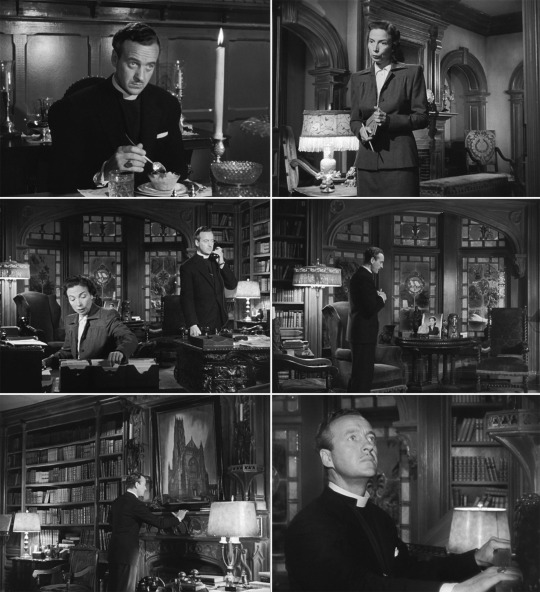




‘The Bishop's Wife‘ is a 1947 American romantic comedy film starring Cary Grant, Loretta Young, and David Niven.
#Cary Grant#Loretta Young#David Niven#Monty Woolley#Gladys Cooper#Elsa Lanchester#Sara Haden#Karolyn Grimes#the bishop's wife#the bishop's wife 1947#old movies#old hollywood#vintage hollywood#old hollywood movies#golden age of hollywood#christmas movies#hollywood christmas
6 notes
·
View notes
Text

Up next on my Christmas 🎄 movie marathon...It's A Wonderful Life (1946) on classic DVD 📀! #Movie #movies #drama #Christmas #itsawonderfullife #FrankCapra #JamesStewart #donnareed #karolyngrimes #VirginiaPatton #lionelbarrymore #thomasmitchell #henrytravers #carolcoombs #GloriaGrahame #larrysims #toddkarns #bobbyanderson #BeulahBondi #40s #dvd #merrychristmas #merrychristmas2024
#movie#movies#drama#christmas#it's a wonderful life#frank capra#james stewart#donna reed#karolyn grimes#Virginia Patton#jimmy hawkins#Lionel Barrymore#thomas mitchell#carol coombs#henry travers#larry sims#gloria grahame#todd karns#bobby anderson#beulah bondi#40s#dvd#merry christmas 2024#merry christmas
1 note
·
View note
Photo

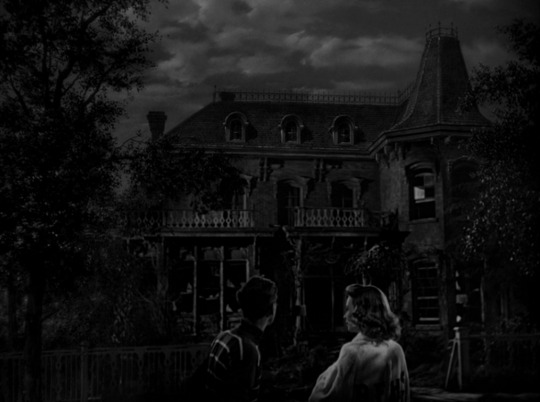
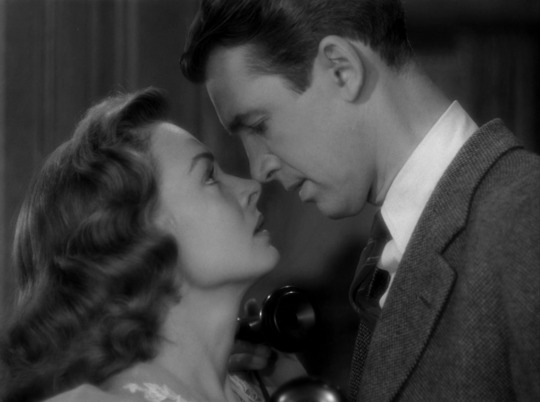

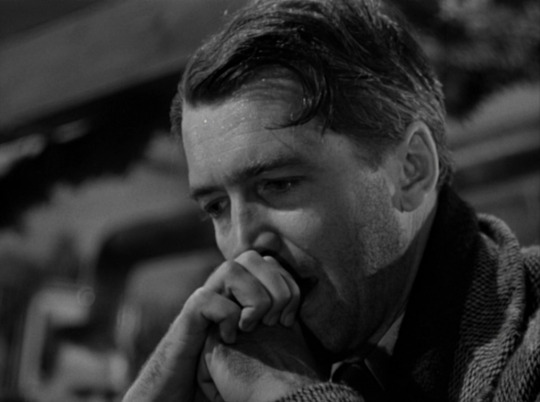
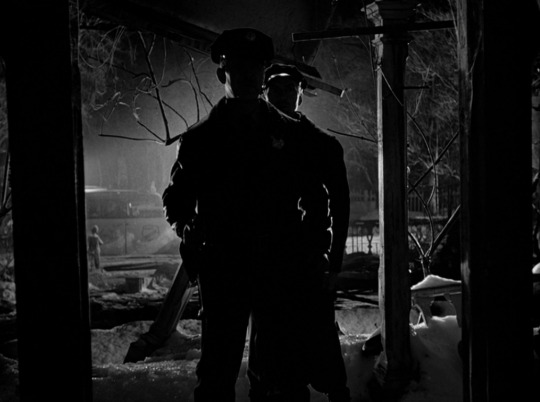




**Shots of the Movie**
It’s a Wonderful Life (1946)
Director: Frank Capra Cinematographers: Joseph F. Biroc, Joseph Walker, Victor Milner (uncredited)
#shots of the movie#it's a wonderful life#its a wonderful life#frank capra#james stewart#jimmy stewart#joseph f biroc#joseph walker#classic cinema#donna reed#george bailey#lionel barrymore#henry travers#karolyn grimes#screencaps#screenshots#stills#cinematography#christmas#cinema#rko#movie stills#movie screencaps#b&w#black & white#1946 in film#1946#1940s cinema#1.37:1
95 notes
·
View notes
Text

The Last Movie I Watched...
It's a Wonderful Life (1946, Dir.: Frank Capra)
2 notes
·
View notes
Photo

Rio Grande | John Ford | 1950
Karolyn Grimes
35 notes
·
View notes